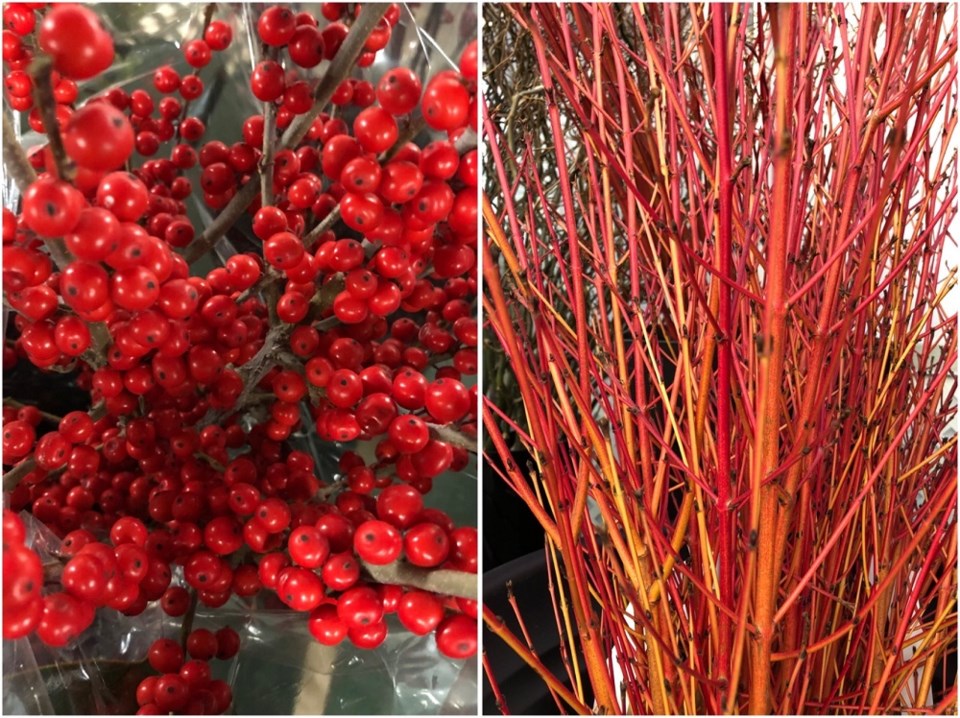In terms of décor, the holiday season has become glitzy and glamorous but there is a continuing trend back to things more natural.
The fragrance and natural beauty of fresh trees and greens has become very important to folks as it helps them feel closer to nature.
Christmas greens, berries and colourful stems are available for purchase at this time of year, but often it's the very unique winter colour found in our gardens that can really make all the difference.
Interesting tree stems have some of the greatest appeal and certainly last the longest. The willow family has led the way with so many new, interesting branch forms.
Salix "Tortuosa" (zone 4), I often joke, is a tree worth far more dead than alive because of its incredibly valuable twisted, curly stems. The golden and red forms of this tree are brilliant in Christmas arrangements, wreaths and even by themselves.
The shrub dogwood family has long been one of my favourite sources of both outdoor and indoor colour. The old standby red and yellow twig dogwoods, Cornus alba "Sibirica" and C. stolonifera "Flaviramea" (both zone 2), still have the most intense winter colour, especially after a few frosts. Cornus alba "Midwinter Fire" (zone 3) continues the red and yellow for an amazing blaze of colour.
In the garden or in Christmas arrangements, these plants are in the "must have" category, as their brilliant stems light up any holiday display.
Berries celebrate the winter season perhaps better than any other colour category. They brighten our gardens, as well as our décor, with equal vibrancy.
Red is still the traditional winter and Christmas colour, and the best red is found with the deciduous hollies.
Red Ilex verticillata (zone 4), an eastern U.S. native, is the most "wow" coloured berry you can find in the landscape, but the newer golden deciduous holly branches have also become popular in Christmas décor. Make sure you have a male pollinator for the female varieties, although many growers are now planting both in the same container. Be sure to cut only half the stems in any given year as they produce best on old wood. If you love birds, you'll be in your glory because Ilex verticillata is their first choice.
Winter flower buds and flowers always add the finishing touch to gardens, winter containers or crafts.
Perhaps the most spectacular and in-demand winter buds are the male form of skimmias. Their deep bronze or green buds complement any greens or flower arrangements. Not only are the buds beautiful now, but as winter progresses, they also open to fragrant white flowers that fill our gardens with perfume and provide nectar for the early honeybees.
The pieris family is growing almost exponentially with so many new varieties.
The most interesting are the variegated forms. Pieris japonica "Flaming Silver" (zone 5) has vibrant foliage that sparks up both shady garden areas and winter arrangements. Their dark winter buds add a nice touch as well.
It's important to plan a little ahead because now is a wonderful time to plant all of these great winter plants.
They will provide the colours, shapes and forms to give everything from arrangements to hanging baskets the holiday "wow factor," and we simply cut them fresh from our own garden. Y
ou can do it too, but only if you plant them soon!



